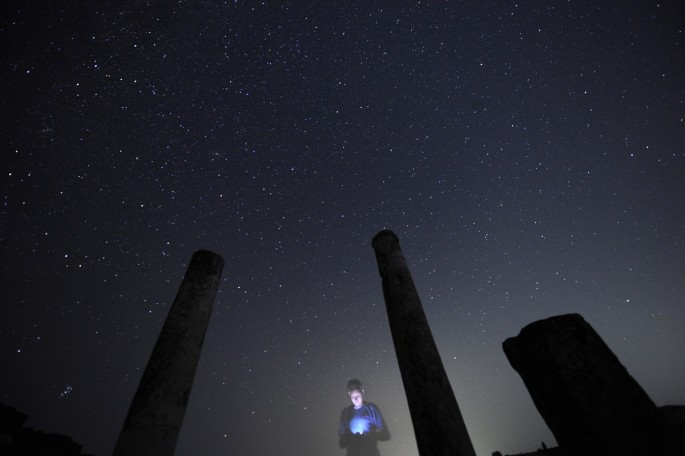October 2015 sky features spectacular views during some highly anticipated astronomical events. During the tenth month of the year, the sky gazers get the opportunity to witness Draconids and Orionids Meteor Shower as well as the conjunction of Venus and Jupiter, and Venus, Mars and Jupiter. Here is a guide to major sky events of October 2015, including New Moon and Full Moon or Supermoon.
New Moon rises on Oct. 13, 2015. According to Seasky.org, the phase reaches its peak at 00:06 UTC. The moon remains more or less invisible in the sky. Thus, it is advised to make the best of this opportunity to observe other celestial objects.
Full Moon rises on Oct. 27, 2015. This happens to be the last of the six Supermoons of the year. It is the phenomena when the moon is at its maximum proximity to Earth when measured from the centre of Earth and Moon. On this day, the moon appears slightly larger than the usual. According to the website, the October full moon is also known as Hunters Moon, Travel Moon and Blood Moon. The phase reaches at its peak at 12:05 UTC.
Meteor Showers
Draconids Meteor Shower peaks on Oct. 8 and 9, 2015. According to Earthsky.org, Draconids is also known as Giacobinids and originates from constellation named Draco the Dragon. Those residing in U.S., Europe, Northern Asia and Canada will be able to enjoy the view as the moon's visibility remains low on these days. It is said to be a minor meteor shower that produces just a "handful" of shooting stars. The best time to view it is evening hours when the astronomical event is at its peak.
Orionids Meteor Shower: Another celestial event to watch out for in October 2015 is Orionids Meteor Shower. The astronomical event peaks on the night of Oct. 21 and morning of Oct. 22, 2015. It is said to be an average meteor shower that produces up to 50 - 70 shooting stars per hour when at its peak. It originates from constellation Orion and it is associated with Comet Halley. The best view can be enjoyed from a dark location away from city lights. Sky gazers do not require any special equipment to enjoy the celestial events.
Conjunctions
October 2015 will host multiple conjunctions of brightest planets in the sky. According to SeaSky.org, Oct. 26 will mark the day of the conjunction of Venus and Jupiter. The two planets will appear to be just 1 degree apart from each other as they align in the sky at the dawning hours. For those who want to enjoy the view, it is advised that the look for the pair in the east. This is the day when Venus reaches its greatest eastern elongation.
On Oct. 28, a three-planet conjunction will take place when Mars will align with Venus and Jupiter to form a triangle. It is said to be a rare phenomenon that occurs at the daybreak.
This month Uranus will be at its closest approach to Earth on Oct. 11, 2015. While at opposition, Uranus will appear brighter than any other day in the year.



























